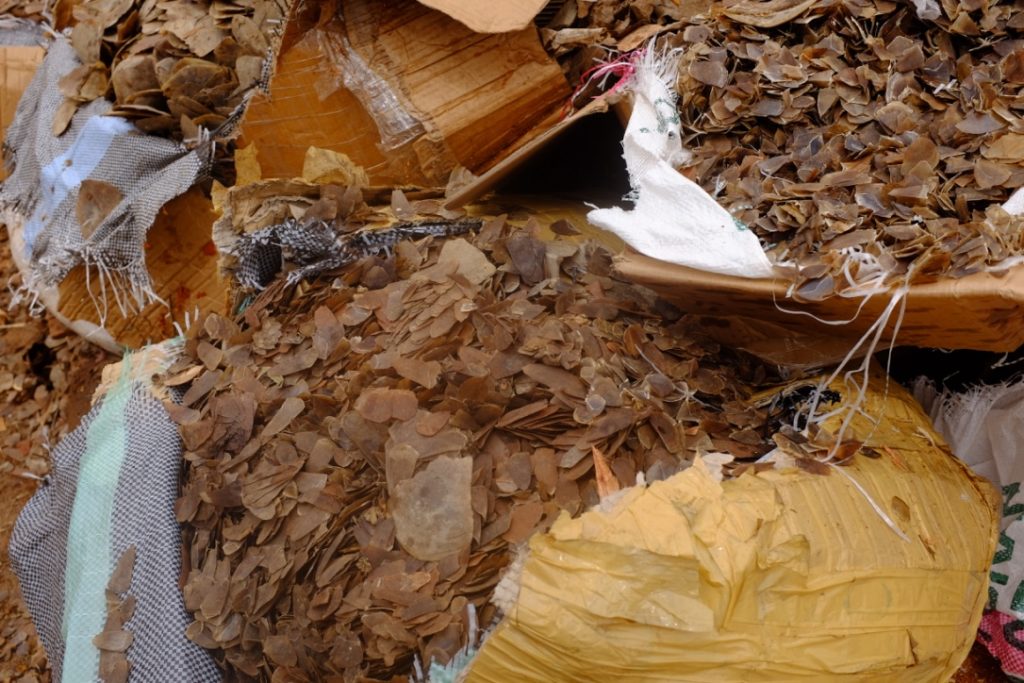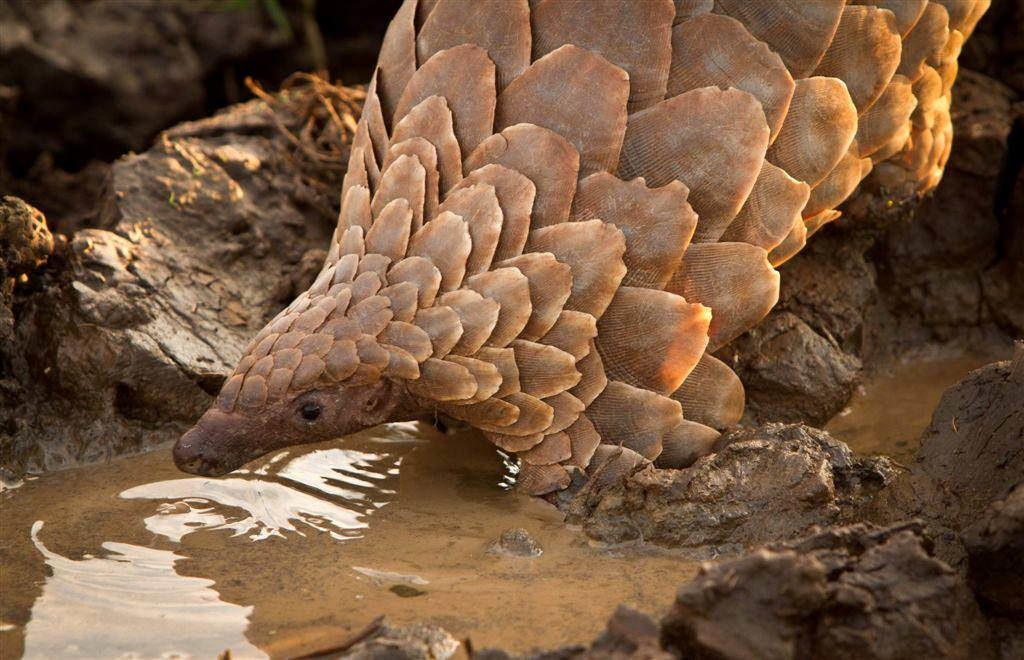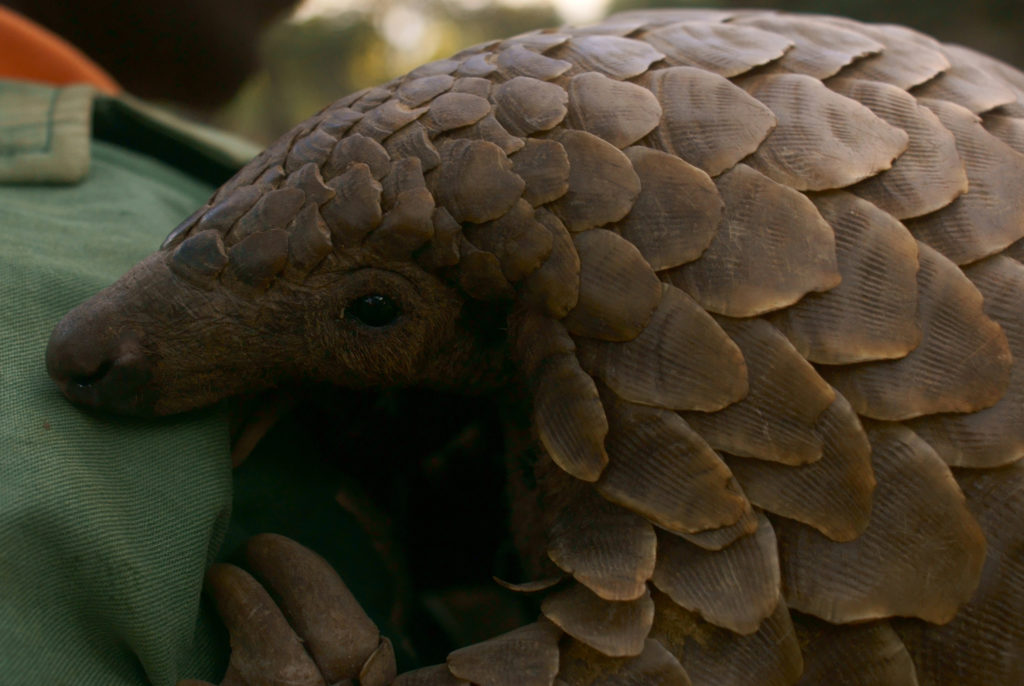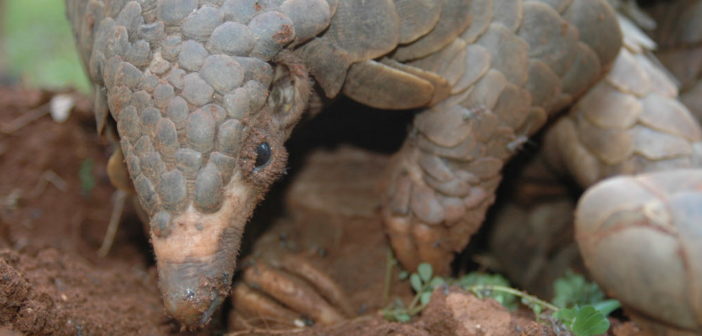In the struggle against the extermination of a species at the hands of illegal trade and human exploitation, no tactic should be beneath consideration.
Written by Paul Newman, EIA Press & Communications Officer
As well as effective transnational law enforcement, it’s also vital to change the attitudes of potential poachers and consumers, to seek to instill respect and esteem for wild animals in place of demand and greed. So it was pleasing to read this summer of Zimbabwean chiefs seeking to utilize age-old myths about pangolins to help change people’s mindsets and give this shy, unique and increasingly persecuted creature a chance at a future.
Frankly, pangolins need all the help they can get. From virtual obscurity just a few years ago, pangolins have soared to the top of one of the worst charts on the planet; they’re now number one on the list of the most-trafficked mammals.
There are eight living species of pangolin, four each in Africa and Asia, and all are currently at risk of extinction. They are threatened by habitat loss, by international trade in their meat for food, and by pesticides. Their scales are carved for decoration and are also used as an ingredient in traditional Asian medicines. China still has a domestic annual quota of roughly 25 tons of scales for medicinal purposes: that’s the equivalent of 25,000-50,000 dead pangolins.

Staggering amounts of pangolin scales, representing thousands of dead African pangolins, seized in Cameroon. Photo credit U.S. Fish & Wildlife Service, CC BY-SA 3.0.
Meanwhile, from India to Nigeria, established wildlife traders have taken advantage of favorable profit margins and a perceived lower risk to traffic pangolins into international markets. In Asia, enforcement agencies are all too frequently intercepting huge shipments of pangolins scales coming from West Africa.
Such crass, industrial-scale exploitation hasn’t always been the pangolin’s lot. To the human cultures that have long existed alongside them, they were more often seen as an enigmatic creature, and regarded at times with something akin to awe. In some areas of Zimbabwe, pangolins are regarded as both very rare and a symbol of good luck, while killing one invites bad luck and is regarded as a taboo act. Zimbabwe’s recent initiative draws on these traditional ties, seeking to encourage people to stop regarding the scaly anteater as a potential commodity and instead reconnect with their older cultural connotations.
Even the pangolin’s scientific categorization suggests its strangeness in human eyes; the genus name Manis is derived from the Latin ‘manes,’ meaning ‘ghost’ or ‘spirit of the dead’ in acknowledgement of both their secretive, nocturnal habits and their unusual scaled appearance.

A Cape pangolin, one of the African pangolin species. Photo credit U.S. Fish & Wildlife Services, CC BY-SA 3.0.
The pangolin’s mythical associations in Africa extend beyond Zimbabwe. Social anthropologist Martin Walsh has written of how pangolins hold a special place in the beliefs of some Sangu people in Tanzania. Walsh reports a Sangu belief that pangolins fall to Earth from the sky, sent by the spirits of the Sangu ancestors. Each newly arrived pangolin latches on to an individual human and follows them home, at which point the individual is required to report the event to their chief’s ritual specialist.
The person ‘chosen’ by the pangolin is then treated as though he or she were the parent of new-born twins, itself an event regarded as abnormal and requiring special ritual treatment. As parents of twins are secluded at home to undergo a series of rites, so too must the person and the pangolin be confined at home and participate in rituals, reportedly involving singing and dancing with other community members.
Walsh adds that the songs sung are said to be the same as used for twin-birth rituals and that the pangolin joins in the dancing; some pangolins are reported to shed tears profusely while dancing and this is interpreted as an omen of good rains in the coming year. Dry eyes signify drought.

Pangolins often walk semi-upright, with their front paws curled together. Photo credit Adam Tusk, CC BY-SA 3.0.
Perhaps the pangolin’s oddity among creatures reflects back at us our own singularity in the animal kingdom and stirs us to look for commonality. In their publication A Communion of Subjects: Animals in Religion, Science, and Ethics, Paul Waldau and Kimberley Patton cite Allen Roberts as writing, “It is strangely ‘human.’ The pangolin has a single baby, walks upright and shows ‘dignity’ when attacked, almost as though it were turning the other cheek.
“Some Africans make the pangolin the central emblem of healing people who have been unable to bear children. The pangolin is so odd that its existence seems almost impossible. But it does exist. If a pangolin can really exist, perhaps anything is possible! The pangolin serves as a symbol of hope that even the unhappiness of not being able to have children may be overcome.”
There are many reasons to revere humble, bizarre and wonderful pangolins. There’s no other creature like them, anywhere, and for that reason alone we should redouble our efforts to eradicate the illegal trade that leaves their futures so perilous.

A Cape pangolin at Wild is Life Animal Sanctuary in Harare, Zimbabwe. Photo credit Adrian Dutch, SS BY-SA 3.0.
We humans are often the self-proclaimed caretakers of the planet, but how often do we actually fulfill that role? If we could give back to pangolins the future we’ve almost stolen, perhaps they could again become symbols of hope for what we might achieve for the many other magnificent creatures threatened by our thoughtless consumption and greed.
Featured image: A pangolin in the wild in Zimbabwe. Photo credit Tikki Hywood Trust, Born Free USA, CC BY-SA 3.0.





